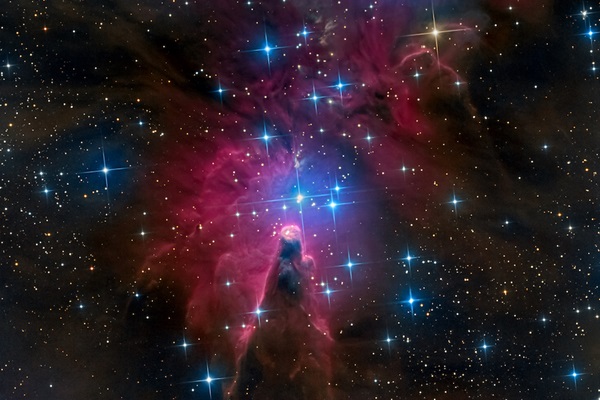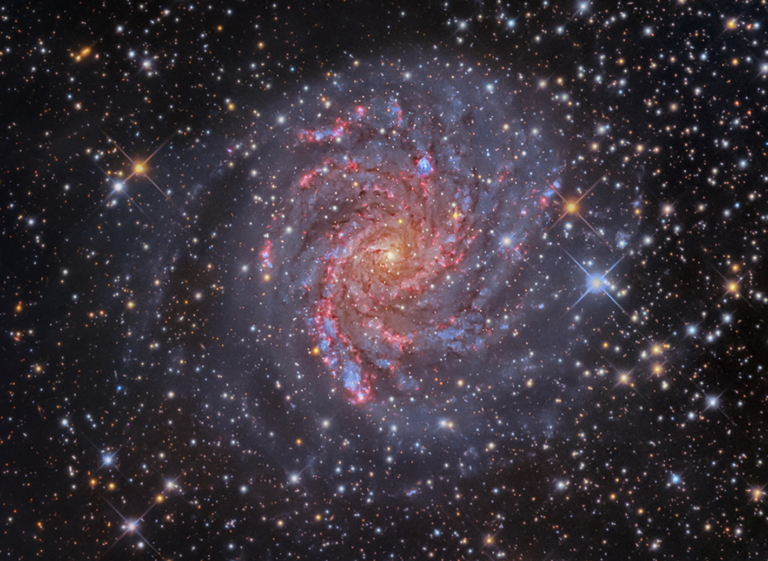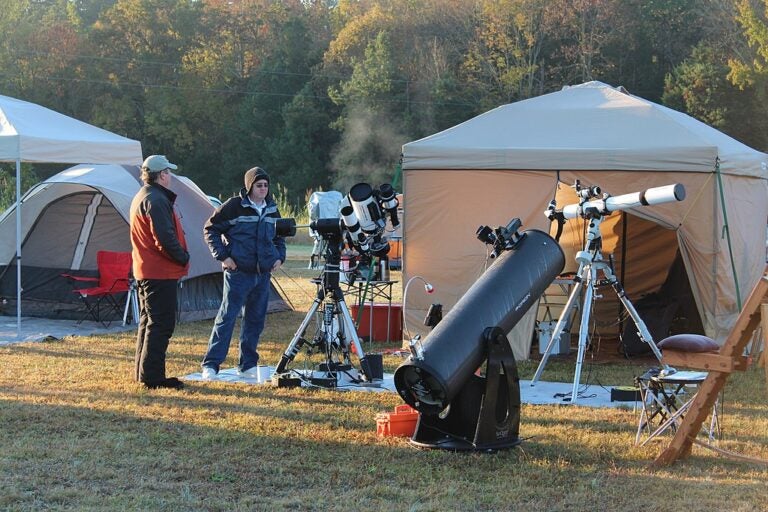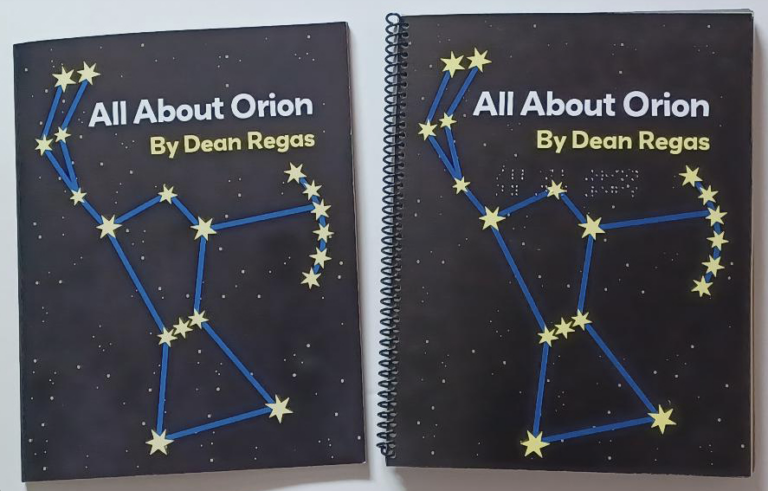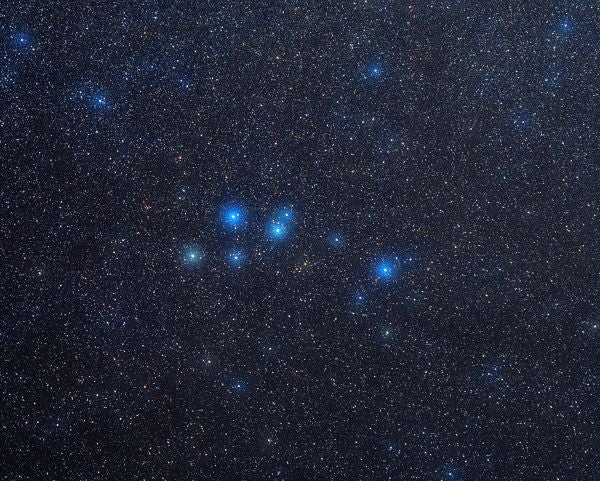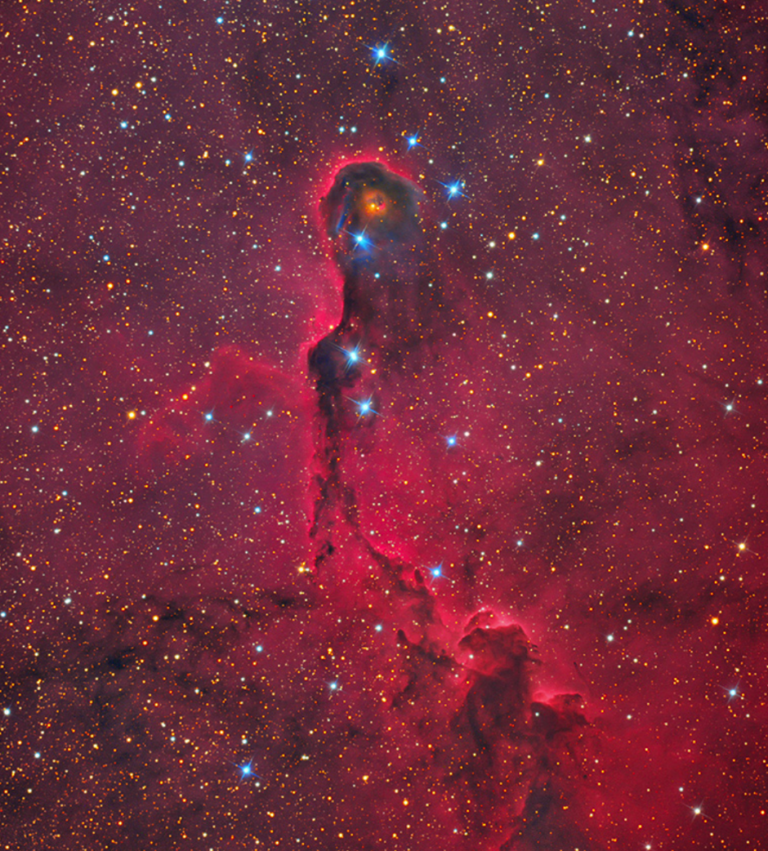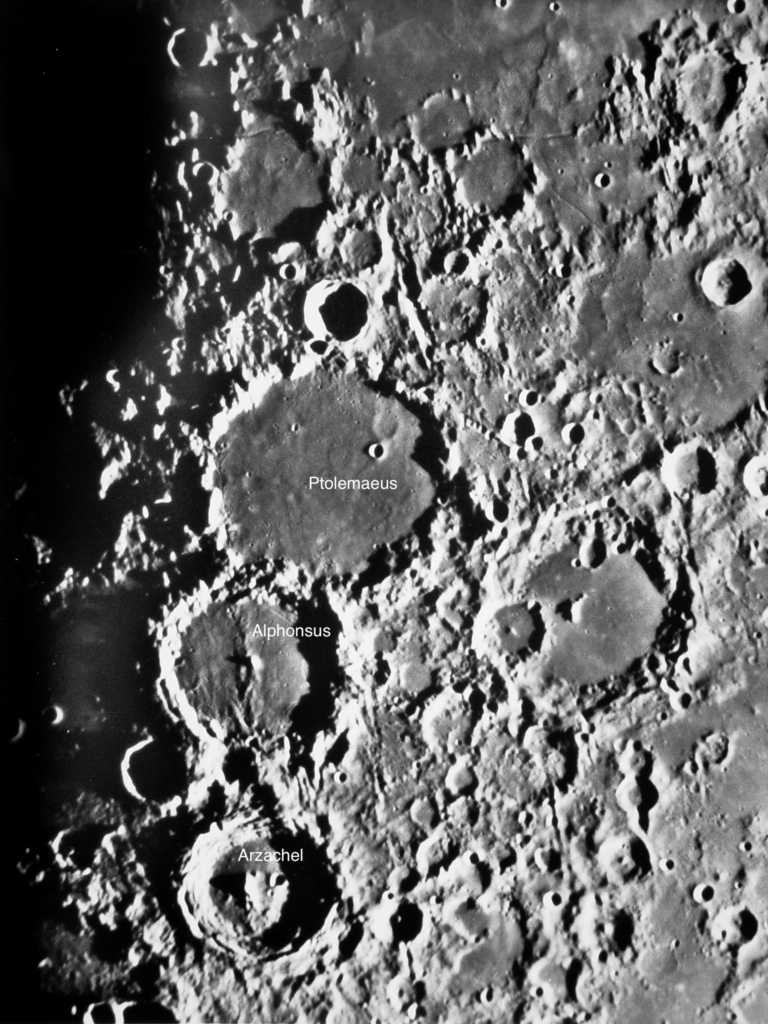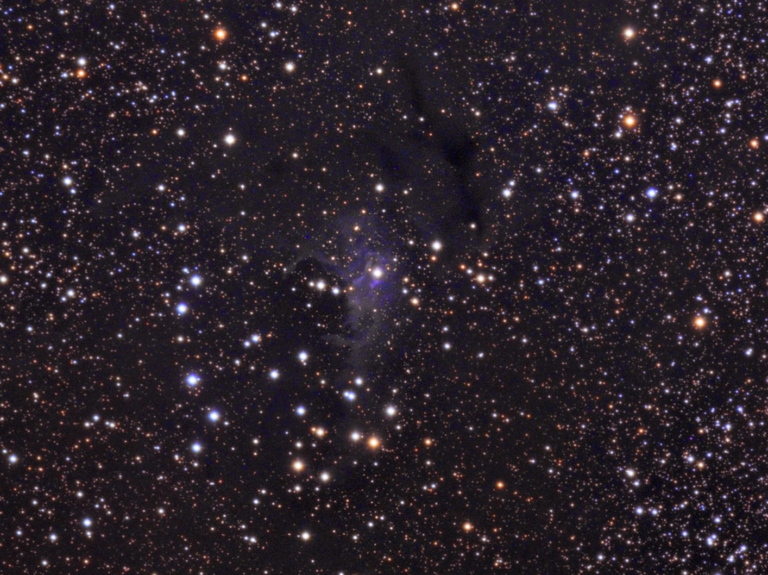The Cone Nebula (NGC 2264) and its associated open cluster, the Christmas Tree Cluster, is in the faint constellation Monoceros the Unicorn. The easiest way to find it is to point your telescope 3.2° south-southwest of magnitude 3.4 Xi (ξ) Geminorum. At magnitude 3.9, the cluster glows brightly enough for you to spot with your naked eyes, albeit as an indistinct fuzz ball. It lies some 2,700 light-years away and measures about 7 light-years across.
With an eyepiece that yields a magnification of 50x, you’ll see 10 to 15 stars to the east and west of 15 Monocerotis, which glows at magnitude 4.7. This line forms the ½°-long base of the tree. Note that while its top points to the south, the tree may seem upside down to you, depending on your scope’s optical configuration. The stars south of the line may appear to make the tree’s top, but they’re not actually moving through space with those in the main cluster. They only happen to lie in the same direction.
At the southern end of the Christmas Tree Cluster is the Cone Nebula. This dark nebula is a cloud of dust and cold gas with a conical shape. And while the cluster is easy to spot with your eye, the nebula is not for observers. Instead, it’s astroimagers who capture it quite easily, superimposed on the brighter emission nebulosity behind it. The emission nebula’s crimson glow results from a two-part process: Its hydrogen first absorbs ultraviolet radiation from the intensely hot star 15 Monocerotis (the brightest star in the Christmas Tree Cluster), then reemits it as red light.
To see the Cone Nebula, you’ll need a large amateur telescope at a dark site. A 14-inch or larger scope might show a strip of nebulosity about 5′ long that originates at the brightest star and proceeds to the west. This gas belongs to the emission nebula Sharpless 2–273, which stretches an additional 2° to the west.
Make sure to explore Astronomy‘s full list of 101 cosmic objects you must see. New entries will be added each week throughout 2022.

